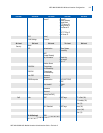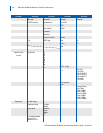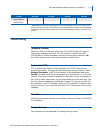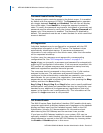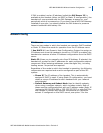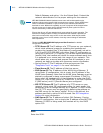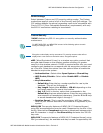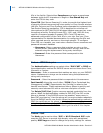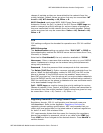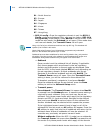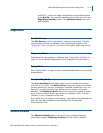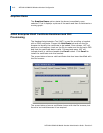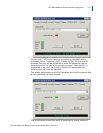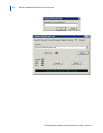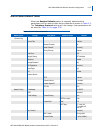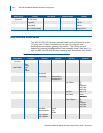
NEC MH150/MH160 Wireless Handset Configuration 3-13
NEC MH150/MH160 Mobile Handset Administration Guide - Revision 2
classes of packets as they are transmitted to the network from the
mobile handset. Default values are given but may be overwritten: WT
in call = 46, WT standby = 40, Other = 0.
Wi-Fi Standard mode uses WMM, WMM Power Save and WMM
Admission Control for QoS, in place of the SVP Server. DSCP tags are
used to change the priority settings for various classes of packets as
they are transmitted to the network from the mobile handset. Default
values are given but may be overwritten: Voice = 46, Control = 40,
Other = 0.
CCX
CCX settings configure the handset for operation as a CCX V4 certified
client.
WPA2-Enterprise
The Authentication setting can select either *EAP-FAST or PEAP as
the authentication method for RADIUS server such as those from Cisco,
Microsoft, or Juniper.
Note that for Fast Handoff, the only selection available is *CCKM.
Username - Enter a username that matches an entry on your RADIUS
server. Alphanumeric strings can be entered using the alphanumeric
string entry technique.
Password - Enter the password that corresponds to this username.
The Delete [PAC/Cert.]: Option removes expired credentials from the
phone. When the authentication method is EAP-FAST the PAC on the
phone is deleted. If the RADIUS server has enabled “anonymous in-
band PAC provisioning”, then the phone will re-acquire these credentials
from the RADIUS server over the air. When the authentication method is
PEAP the certificate on the phone is deleted and a new certificate needs
to be downloaded through the HAT.
QoS – DSCP tags are used to change the priority settings for various
classes of packets (Voice, Control, and Other) as they are transmitted to
the network from the mobile handset. Default values are given but may
be overwritten. Voice = 46, Control = 40, Other = 0.
Regulatory Domain/802.11 Config/Transmit Power
Regulatory domain, 802.11 configuration and transmit power are
interdependent. Refer to the Appendix:
Regulatory Domains for
regulatory domain setting specifications. NEC recommends that you
check with local authorities for the latest status of national regulations
for both 2.4 and 5 GHz wireless LANs.
FCC requirements dictate that the menu for changing the regulatory
domain be available by password, which in our case is the LINE key.
Press LINE and then navigate to the desired domain. Press NavOK to
set the domain.



